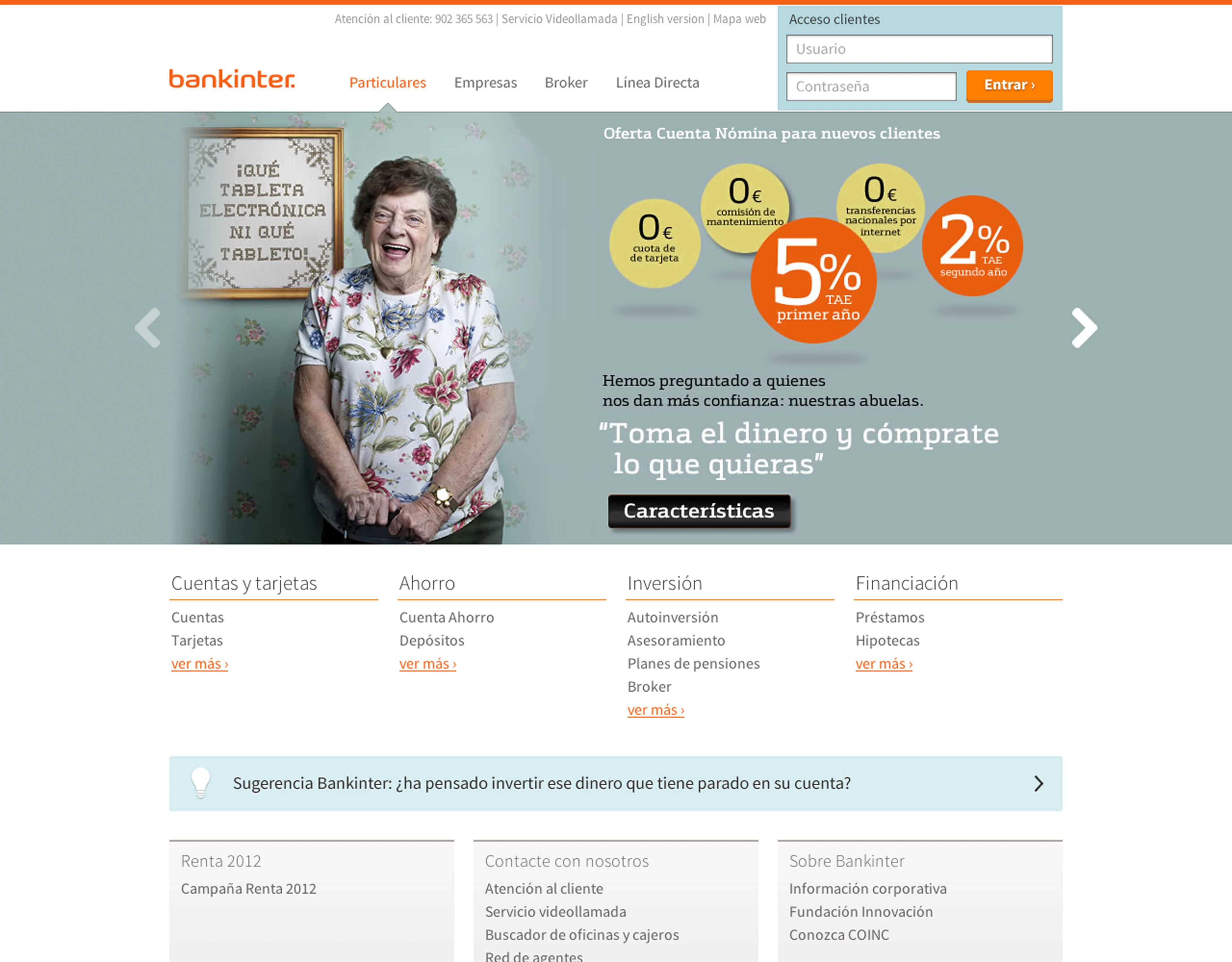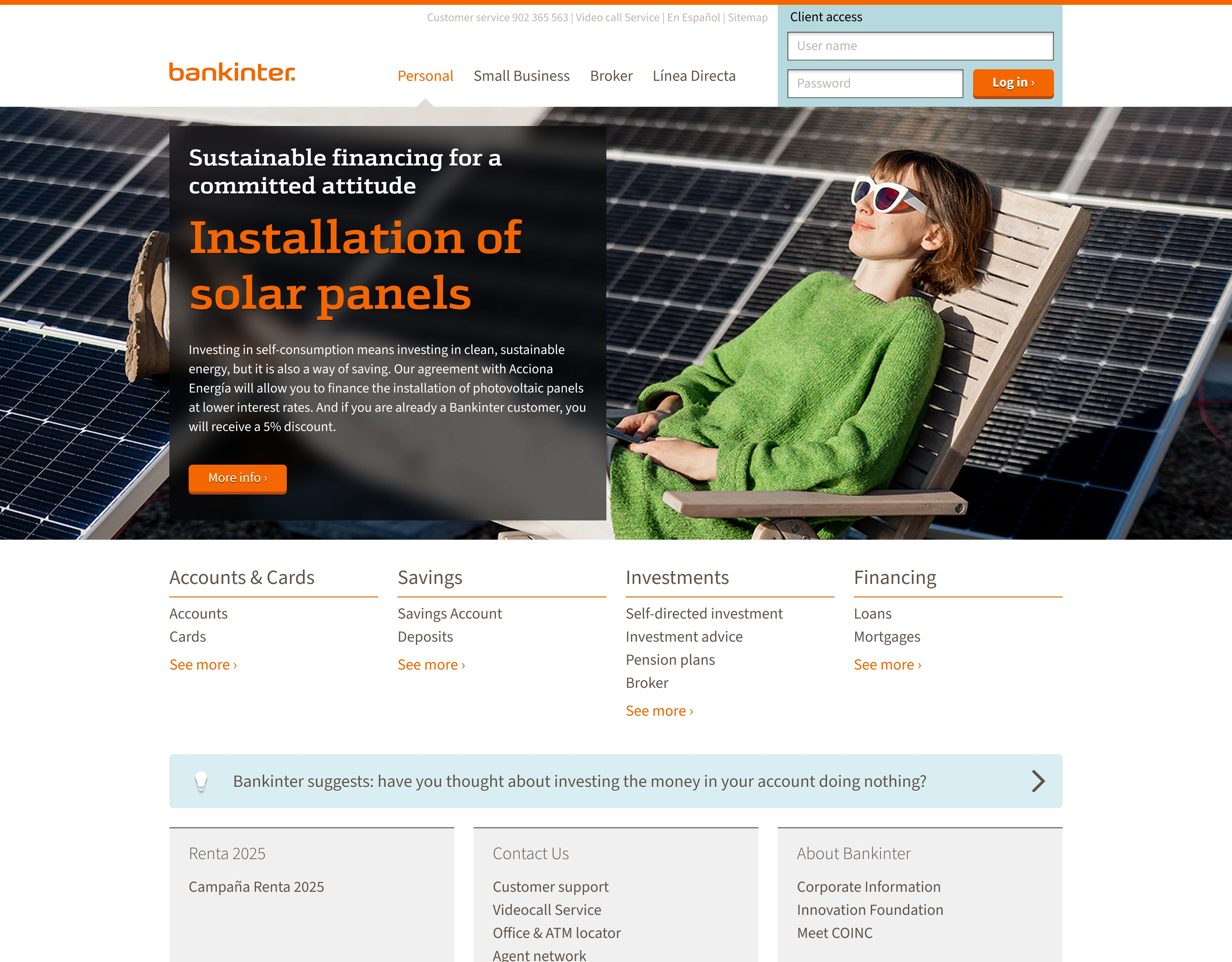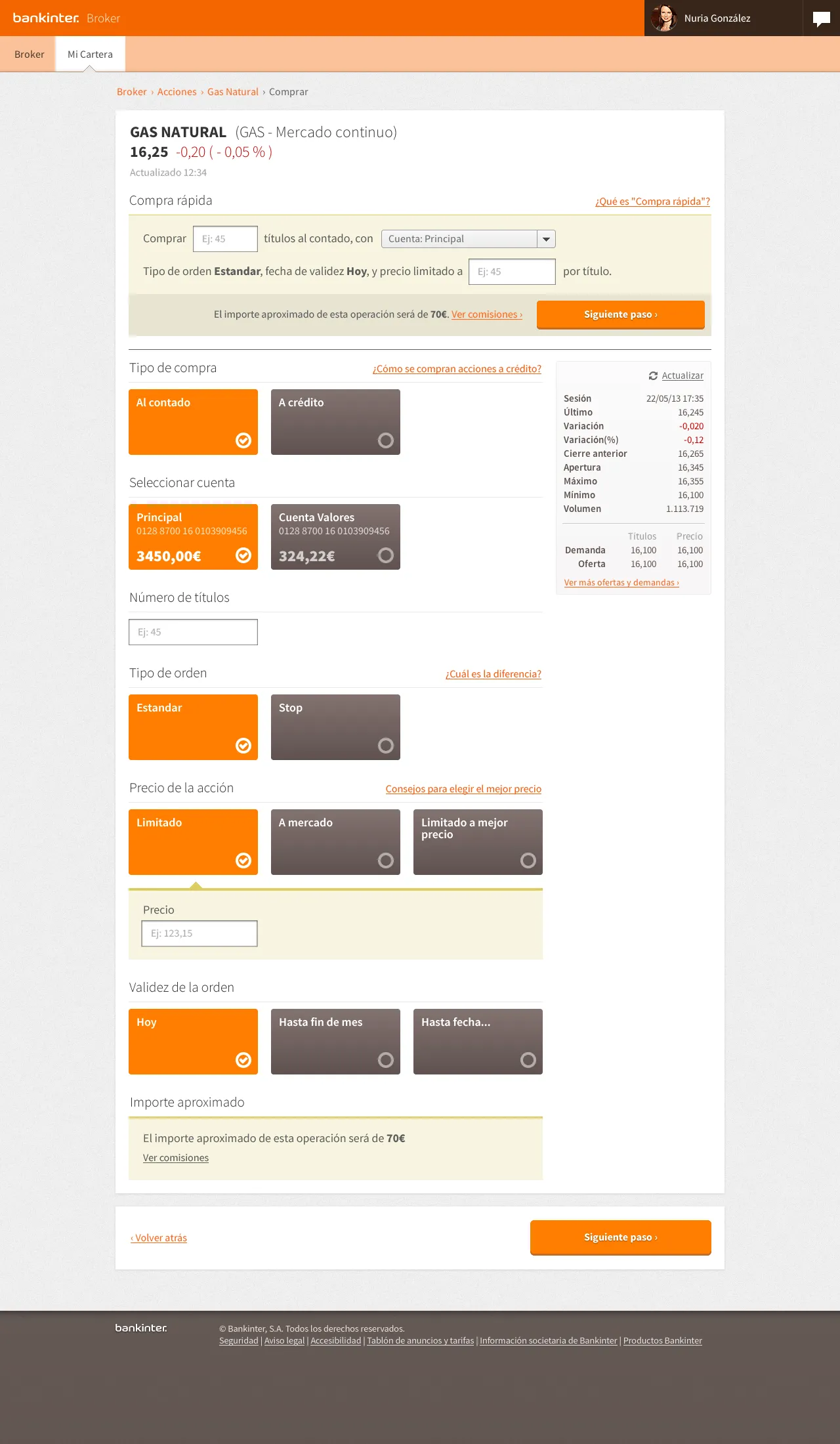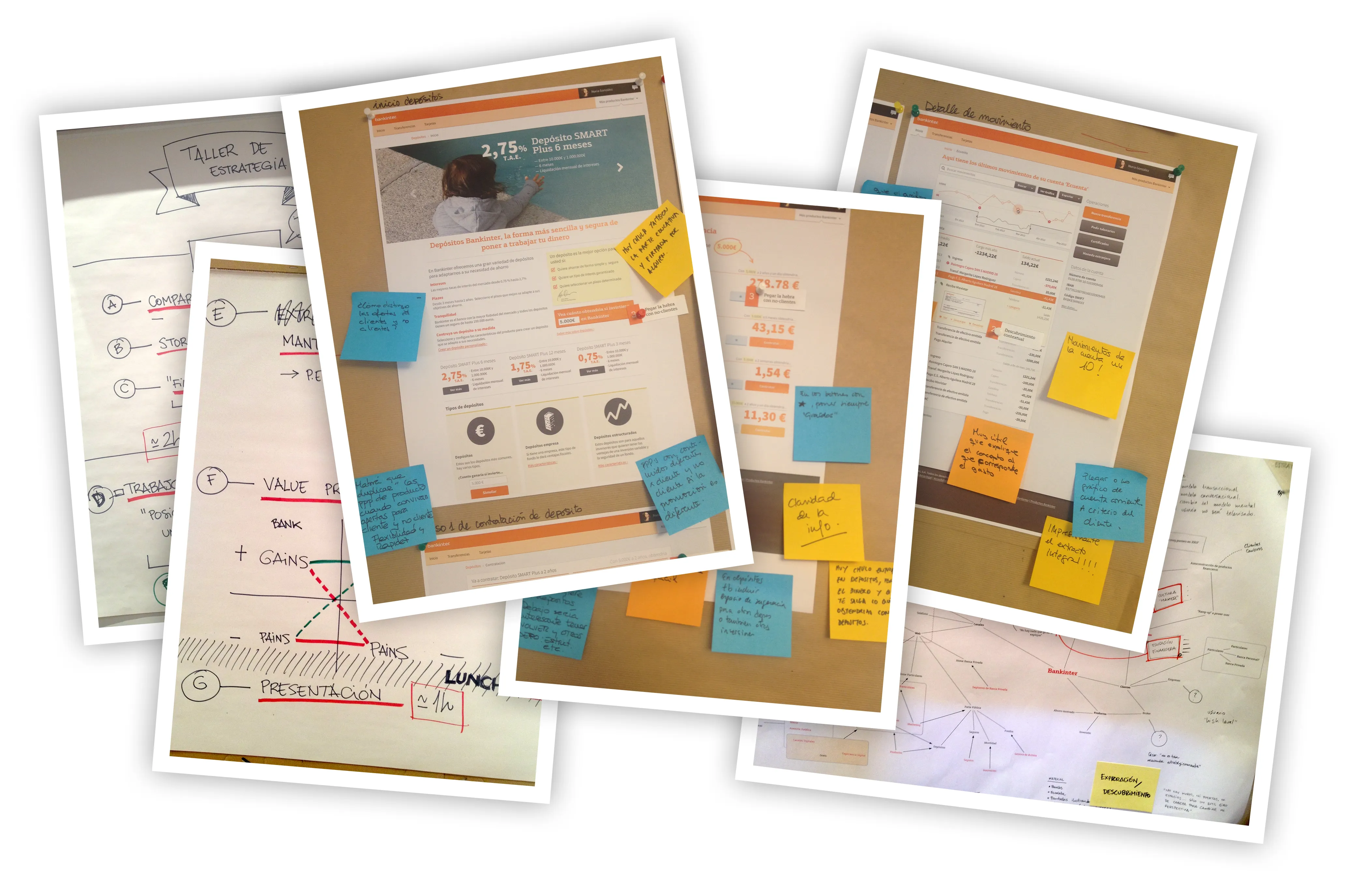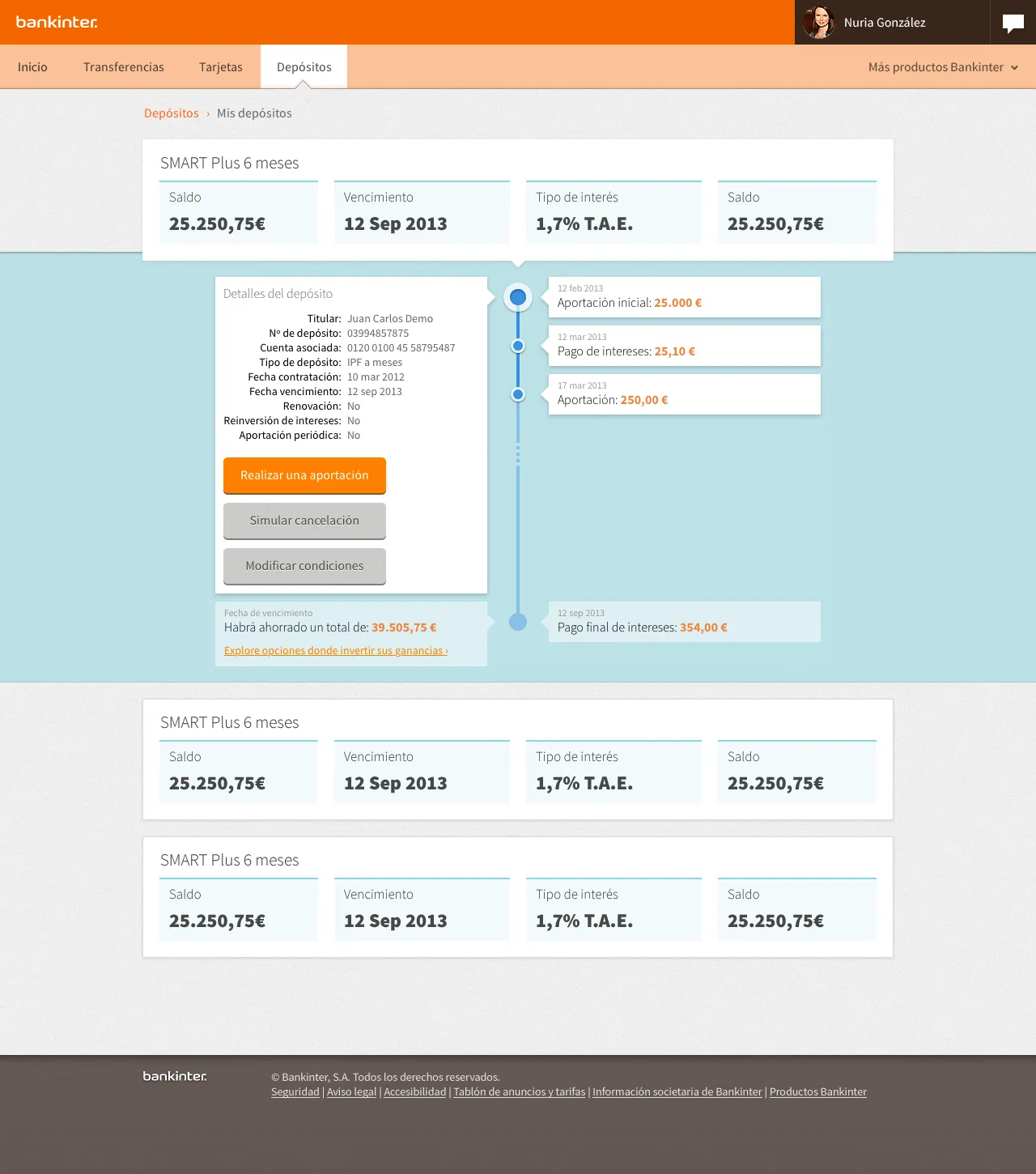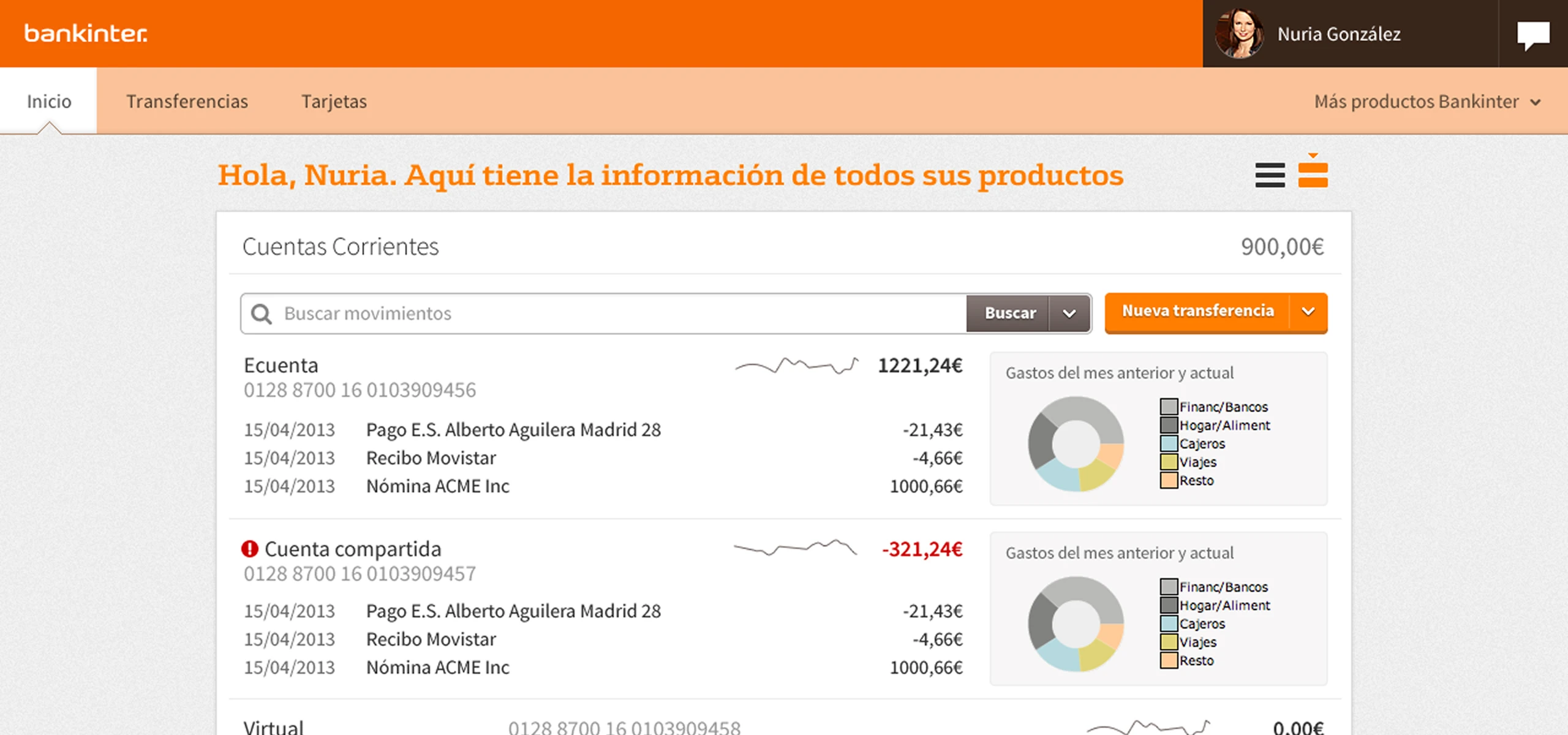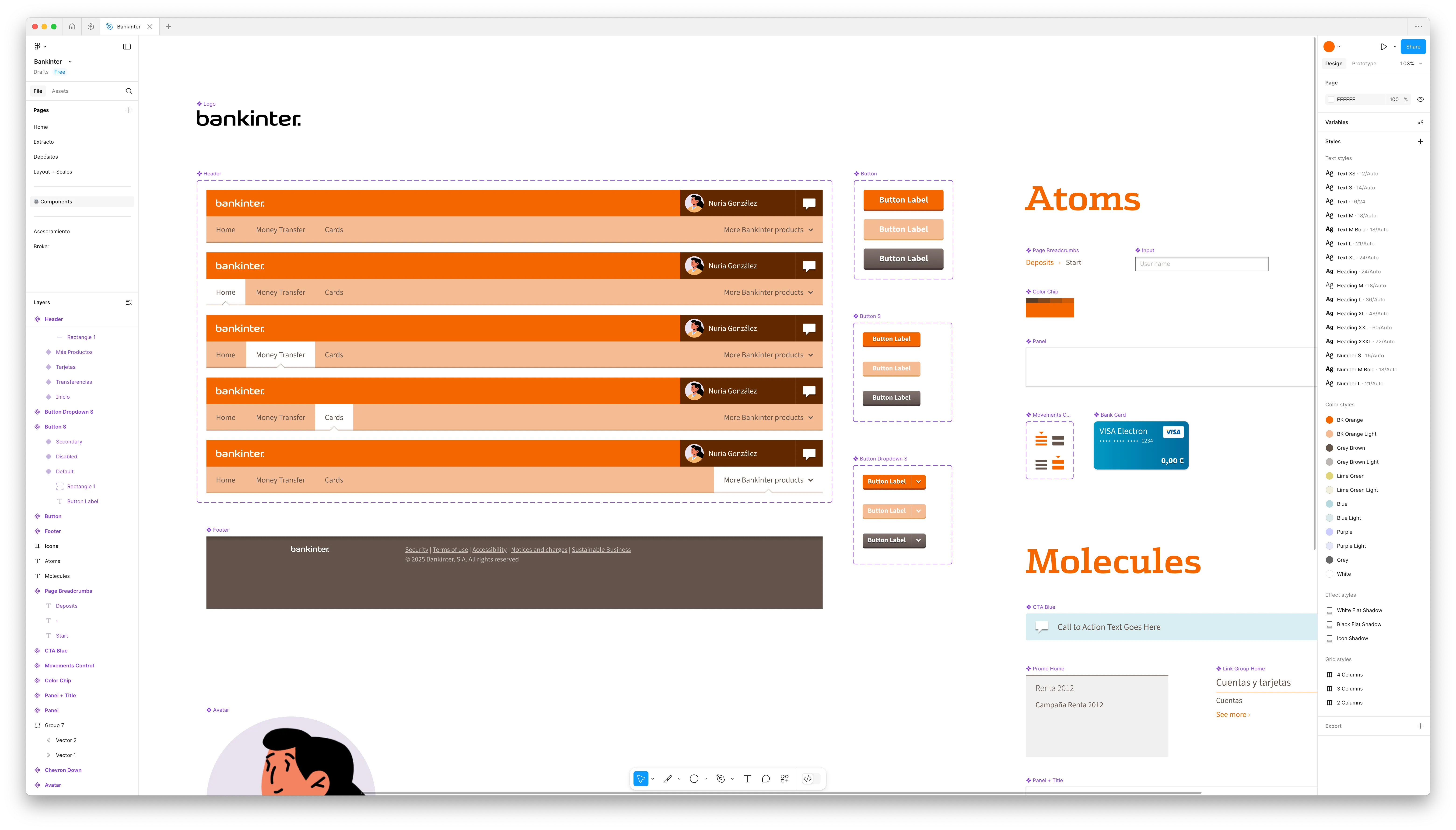Bankinter, Remastered
A revision of a project I did for Bankinter in 2013. I took the original design and updated it to 2025 standards, using modern tools and techniques.
- Client Personal, 2025. Based on a project for Bankinter, 2013.
- Tools Visual Design (Fireworks, Sketch, Figma), Design Ops
What is this?
Every now and then, the music industry decides to revisit some of its more iconic records, and breathe new life into them.
In a similar spirit, I decided to revisit one of my old projects, and see how it would “sound” a few years later: revisit decisions made and solutions applied (if needed), and rebuild parts of it with new tooling and workflows.
I thought it would be an interesting experiment, to evaluate how far we’ve come as a profession (and what, if anything, we’ve missed in the way here).
I was not disappointed.
The original project
My chosen project is one I’m particularly fond of: the complete redesign of Bankinter, one of the largest banks in Spain (back in the day, at least).
It was a huge project, with a lot of moving parts, and a lot of people involved. I was the lead designer, and I worked with a team of three designers (UX, Business and Service Design), a UX researcher, and a project manager / strategic designer. We worked on the strategy, the design, and part of the implementation of the new design.
It was the last big design project I worked on before joining Sketch, and the things I learnt about systemic design in complex scenarios helped shape many of its features, including the Symbols system in Sketch 3.0.
Also, their branding is orange. That’s always a plus.
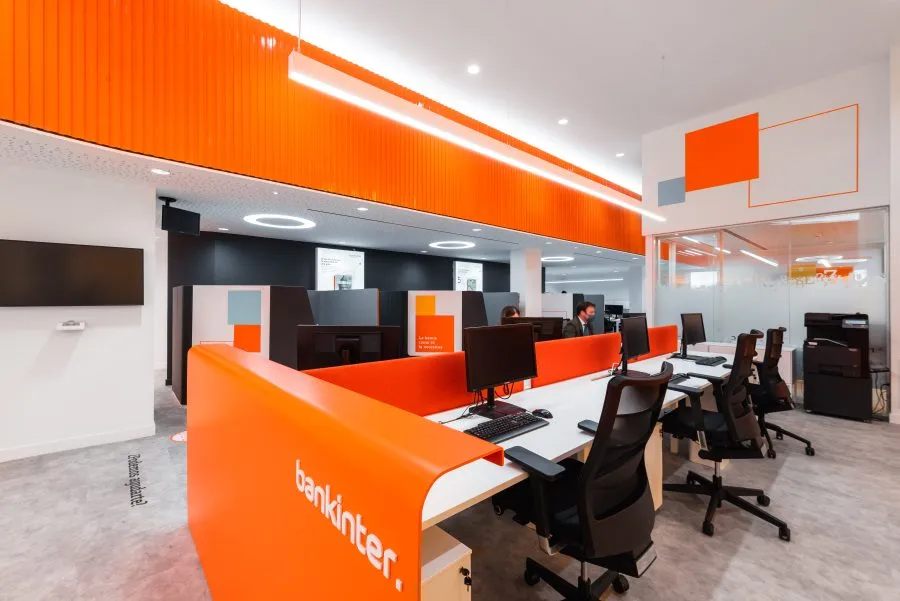
Bankinter was the first enterprise project where I started using Sketch alongside our official design tool, Adobe Fireworks. We also added a bit of Adobe Illustrator and Microsoft PowerPoint, and even some HTML for clickable prototypes.
Collaborating with a team back in the day was a nightmare. An infinite game of ping pong via email and shared file servers, with no version control. Hundreds of files named YYYYMMDD-project-name-editor-name.extension, and a consolidation step at the end of every day to merge all the changes into a single file.
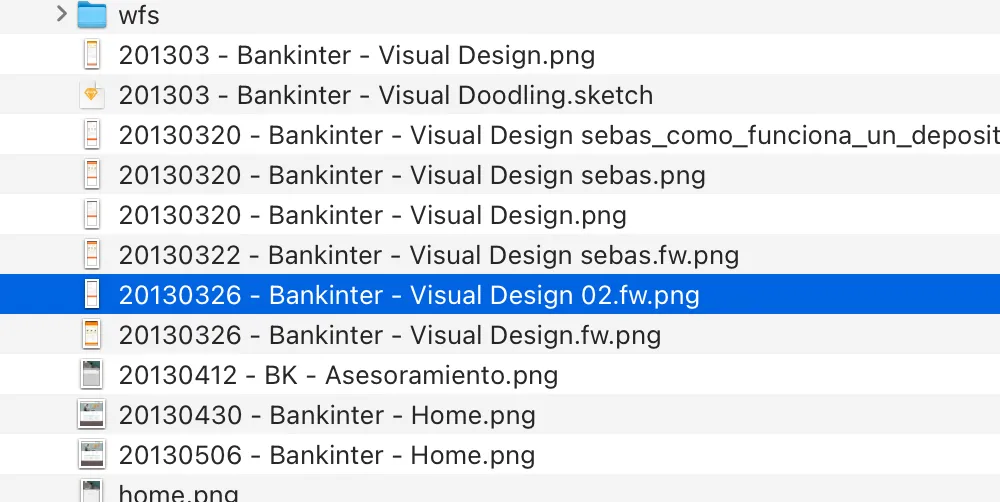
A nasty side effect of using Fireworks (and the main motivation behind this remastered project, really) is that all the exports from the project are low resolution bitmaps:
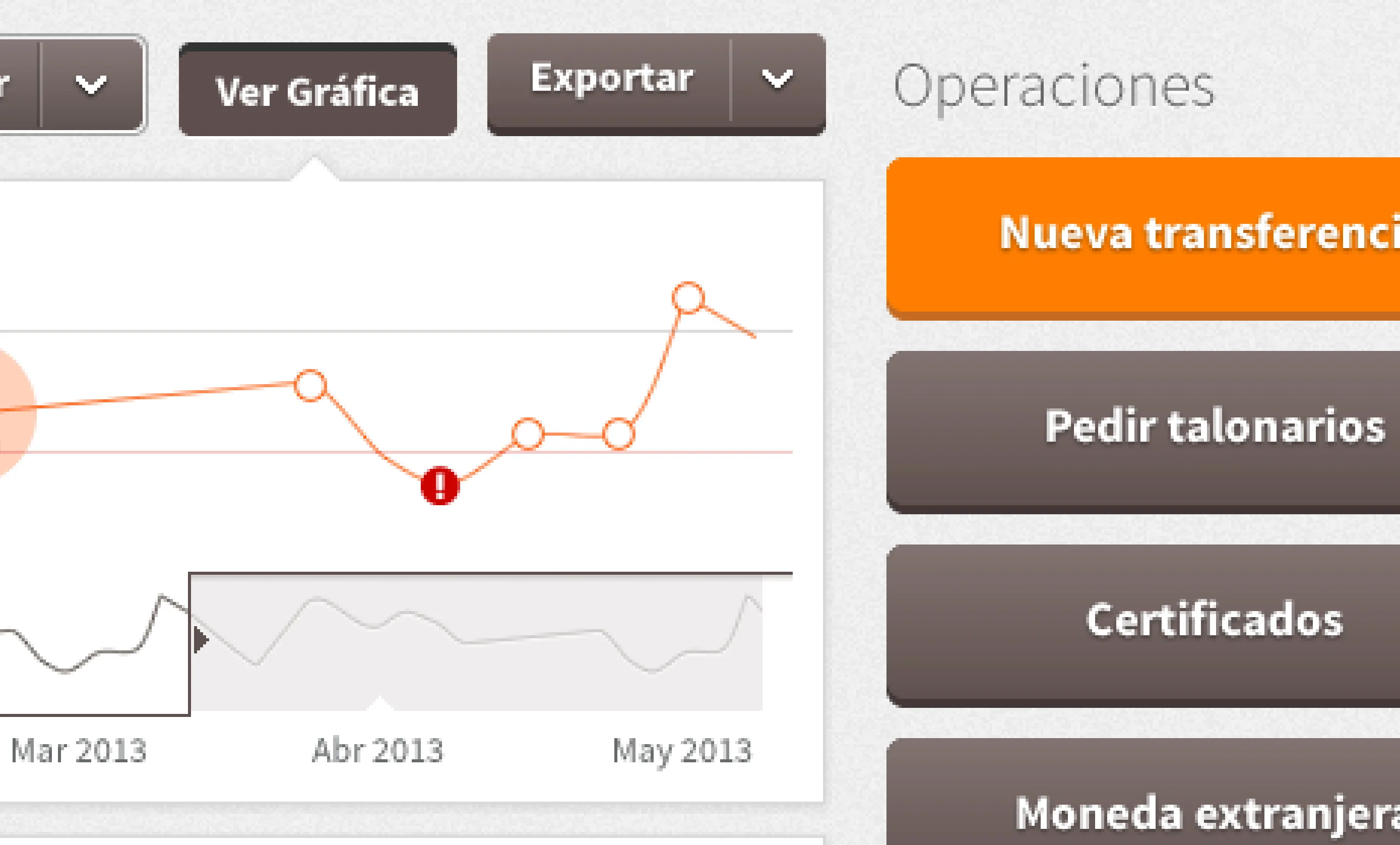
I’m old school, and love the texture of fist-sized pixels and the sharpness of a good pixel-perfect line. But I have to admit these don’t live up to modern standards.
The new project
This is where the remastering comes in: I took the original design and updated it to 2025 standards, using modern tools and techniques. I wanted to keep the spirit and the design decisions as close as possible to the ones we made back in the day.
Design foundations
Big, bold, flat designs are still a thing, and I still love them. I think they work well for the banking sector, where the goal is to make the information as clear and easy to read as possible.
I’m glad to confirm that the basics are the basics for a good reason, and most of the big decisions made back in the day have stood the test of time: the grid, spacing, and font scales still work like the first day.
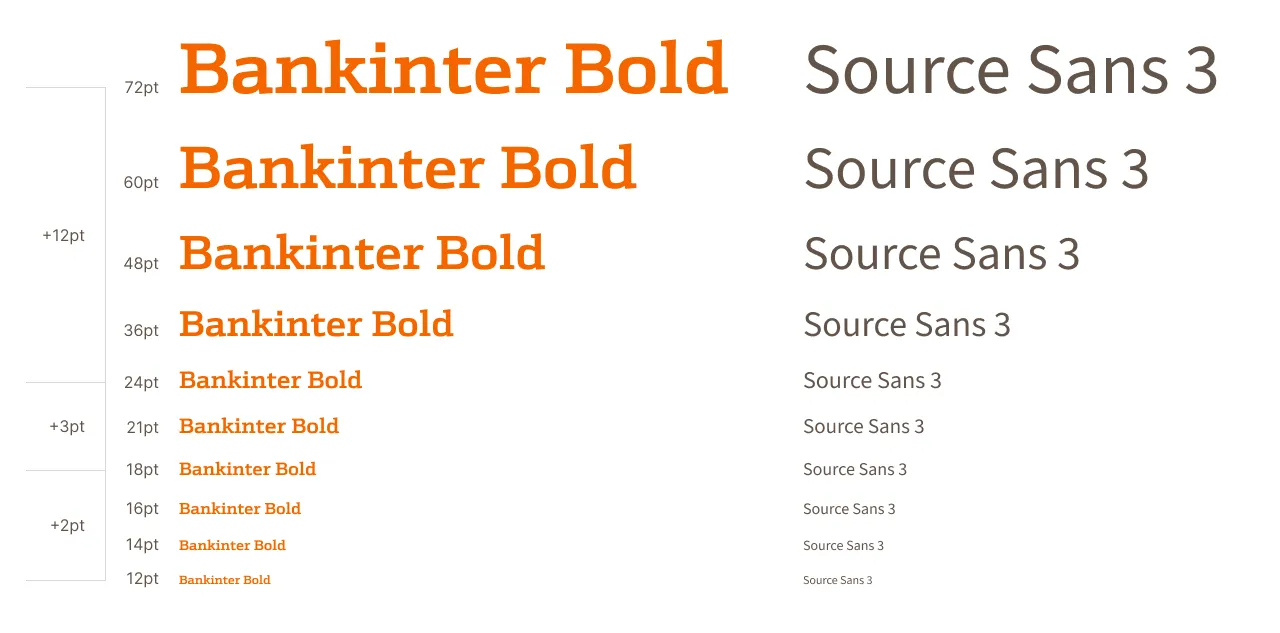

Visual design
Something we’re missing in 2025 is how easy it was to work with noise textures in fills. Figma has nothing like that (at least natively), and Sketch’s implementation is (still) a bit of a hack. Fireworks’ noise feature was excellent (it was truly random), and I miss it dearly. I removed the noise in most fills, and while it’s not a huge change, it takes away some of the character of the design.
In exchange, we got background blur, which I used in a few places to add some depth to the design (although it’s not the best companion to a very flat design like this one).
The remastering process
I spent some time redrawing a few screens from scratch, translating the text, and polishing the layout and spacing. I even updated the dates on the screens:
While I was at it, I created styles and components in Figma.
The new project is still a work in progress. The plan is to transition all the original screens to Figma, including the clickable prototypes that we originally created using HTML and CSS.
While I’ve tried to keep the design as close to the original as possible, I am definitely taking advantage of the new tools and techniques available. Symbols in Fireworks were a bit of a hassle to work with, and modern tools make it a lot easier to create and maintain reusable components.
I’m also using Figma’s Autolayout feature to create a more flexible design system, keeping the design as modular as possible. I’m not a huge fan of the feature, but I have to admit it makes some things easier. I still prefer to use it as a last resort, and only when I really need it. As a designer who codes I, think we sometimes forget that Figma is a means to an end, not the end itself. I riff a bit about that in my How I Work page.
